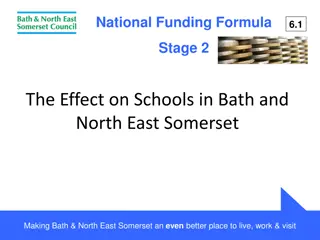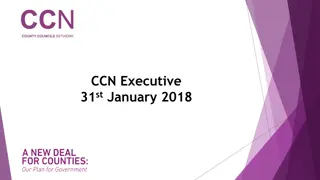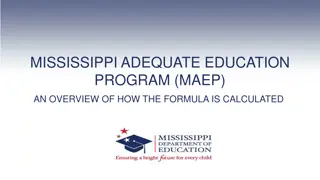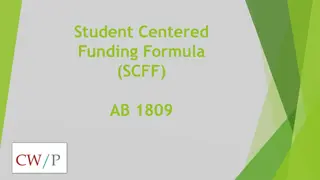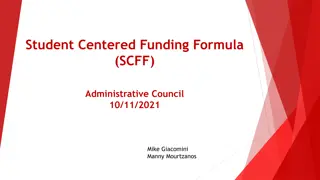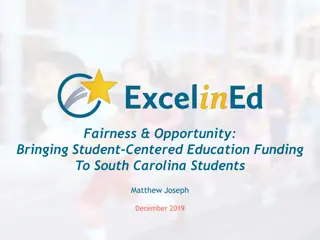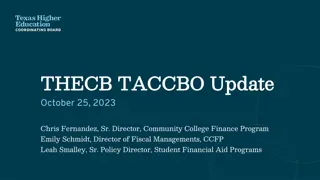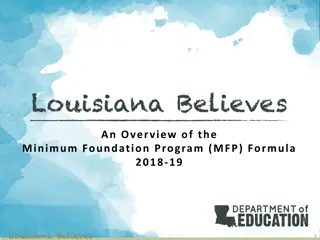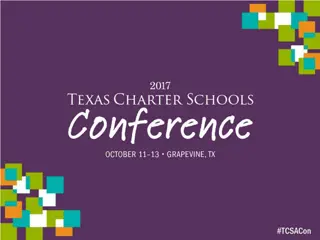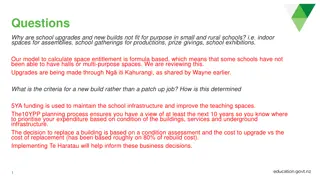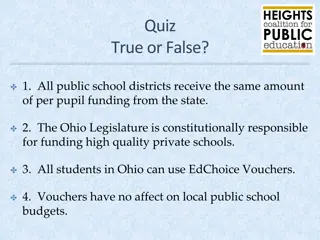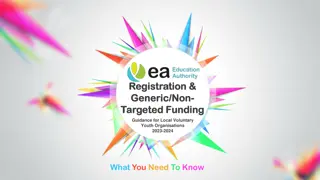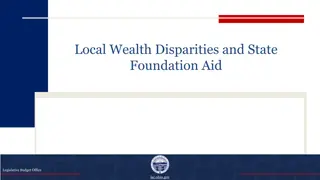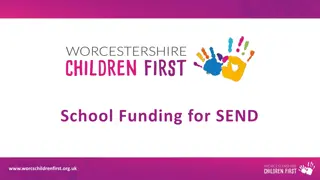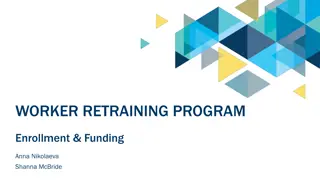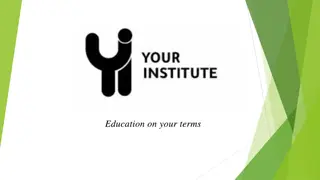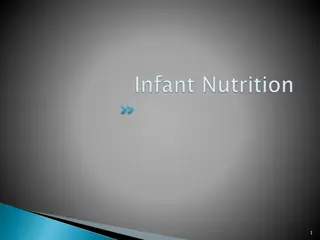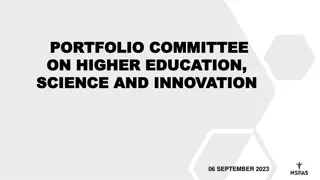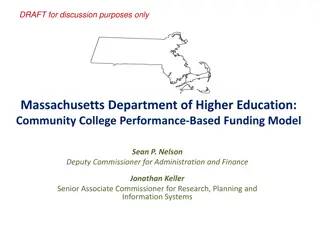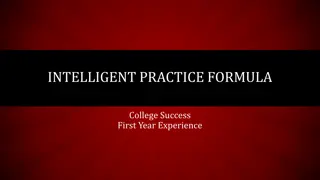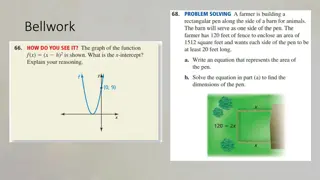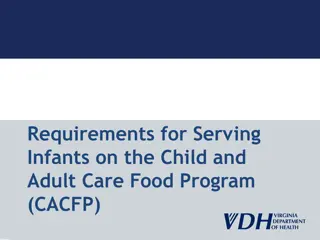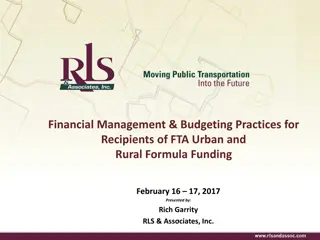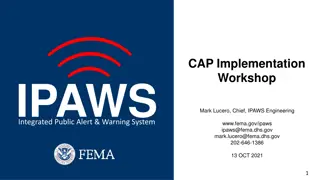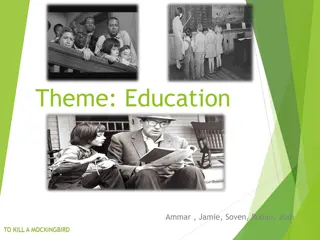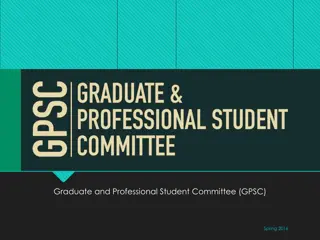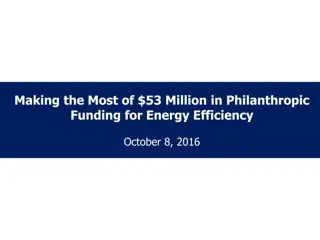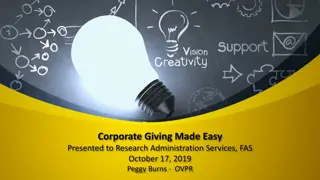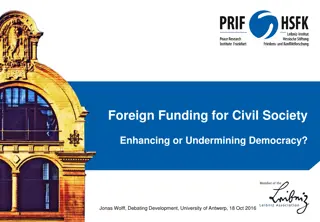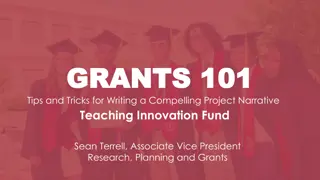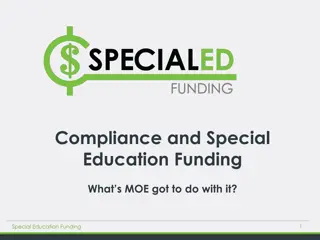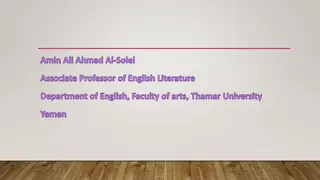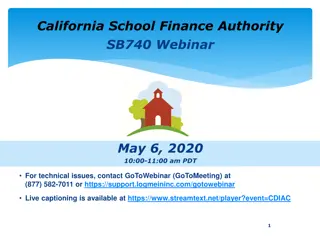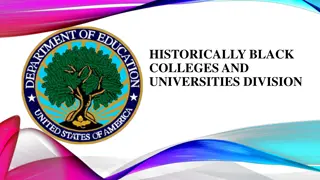Challenges in Nevada's Education System: Funding, Outdated Formula, and Unique Issues
Nevada faces significant challenges in its education system, with low rankings in education and education funding. The state struggles with outdated funding formulas, inadequate teacher salaries, large class sizes, and regressive funding distribution. These issues lead to overcrowded classrooms, cuts to maintenance and programs, unmet special education needs, and limited resources for students. Additionally, Nevada grapples with high percentages of ELL students, transient student populations, and parental workforce challenges. The state's education funding formula, the Nevada Plan, has not been updated since 1967, failing to address the changing demographics and educational needs of the population.
Download Presentation

Please find below an Image/Link to download the presentation.
The content on the website is provided AS IS for your information and personal use only. It may not be sold, licensed, or shared on other websites without obtaining consent from the author. Download presentation by click this link. If you encounter any issues during the download, it is possible that the publisher has removed the file from their server.
E N D
Presentation Transcript
What we know: Nevada ranks last in education But did you know that Nevada also ranks towards the bottom in education funding? Coincidence?
What values does Nevada place on its students? Teachers: 3rd worst salaries in US when accounting for number of pupils / classroom Largest class sizes in US Nevada gets a D in Education - The 2018 Quality Counts report One of the most regressive funding formulas in US - latest Is School Funding Fair? report Nevada gets an F in education funding distribution and fiscal effort - The 2018 Quality Counts report. NV school funding falls short by at least $4,000 per pupil - 2018 APA study
Funding has remained flat since 2009 (inflation adjusted) Funding from the Nevada Plan, not earmarked programs
What hasnt remained flat? General Operating Costs Transportation Employee Raises Employee benefits Utility Costs Books and technology resources State and federal mandates and requirements on students, teachers, and districts Funding adjusts by approx. 2 percent inflation. Costs go up approx. 3-5 percent. Costs > Funding
What is the result? Overcrowding (growing classroom sizes) Cuts to school maintenance Unmet special education, ELL, and FRL needs Forgone purchase of needed textbooks Lacking career and technical education programs in rural schools Cuts to school programs and resources Limited programs for Gifted and Talented students Morale poor
Unique Nevada Challenges Second highest percentage of ELL students 17% Half of students on Free / Reduced Lunch One fourth of students are transient. Much of workforce employed in hospitality (parents working more shifts than U.S. average = unavailable after school and on weekends.)
Outdated Education Funding Formula The Nevada Plan funding formula hasn t been revised since inception in 1967. Since then the state population and demographics have changed drastically. Oldest education funding formula in the nation The Nevada Plan Doesn t account for ELL, low-income, and gifted & talented students Fails to adequately accommodate the dramatic changes in what is expected (mandates & standards) from students, schools, and districts Doesn t even adjust to cover actual cost increases. NO RELATIONSHIP TO THE ACTUAL COST OF EDUCATING STUDENTS.
Shuffling of funds Underfunded state and federal mandates = money shifted to cover mandates Special education weights inadequate covers less than half of what is necessary, = general fund dollars shuffled Funding teacher raises = growing class sizes, funds shuffled from one critical resource to cover another
To make matters worse... Room Tax The Room Tax was diverted! Passed in 2009 to increase funds for teacher raises and student achievement, it was instead used to plug holes in the budget and never actually resulted in an education funding increase. Since 2011, Nevada has diverted $1.2 billion meant for education increases. Marijuana Tax Marijuana tax revenue that was supposed to increase education funding so far never has.
The Shell Game Even when tax dollars do go to education they don t necessarily increase education funding. When new tax dollars come in, the legislature can withhold other revenue sources leaving the amount of education funding the same. The result? NO ACTUAL INCREASE Nevada s K-12 system serves as one means by which the state budget for all purposes is balanced. Commerce (2009). -Las Vegas Chamber of
Studies Sound Alarm Bells Several studies commissioned by lawmakers have revealed many problems with school funding in Nevada. Most recently, in 2018 Augenblick, Palaich, and Assoc. (APA) studied how much funding it would take to give students the opportunity to succeed. APA talked to educators, administrators, and the community to get input Examined the state standards and mandates, and evidenced based practices APA found Nevada s per pupil funding was $3,000 to $4,000 short (about half) of adequately funding our students, and even more funding was needed to meet the needs of low-income, English learner, and special education students.
Moving in the Right Direction The 2017 legislature approved the continuation of some limited programs: ZOOM Schools (ELL) - $142 million Victory Schools (Low-income) - $80 million Read By Grade 3 Grants - $44.5 million Full Day Kindergarten - $170 million College and Career Readiness Grants $63 million SB 178 Resources for at-risk students - $72 million Known as Categorical or Restricted-use funds
Challenges with restricted-use funds Limited purpose. Often cannot be used to cover general operational expenses such as salaries, maintenance, transportation, etc. Insufficient to cover all ELL, Special Ed or low-income students. Unreliable. Must be reauthorized every biennium, thus cannot be relied on every year. Vulnerable. They are vulnerable to a change in government leadership. Limited scope. Often ignore needs of some schools/students. Disproportionately disadvantages rural schools. Restricted-use programs are Band-aid programs
K-12 Affects Local Economy... Our ability to diversify Nevada s economy is absolutely tied to the improvements we make in educational outcomes, student proficiencies, higher graduation rates and expansion of workforce training. -- John Guedry, CEO, Bank of Nevada Businesses shun Nevada because of its underfunded K-12 systems. Stating: Uneducated and unqualified workers who are unable to meet the demands of private businesses. A subpar public school system that employers don t want to subject their children or their employees children to. -- LV Sun
And Overall Well-being High school dropouts: 2X as likely to be unemployed 3X as likely to receive welfare assistance Clear and strong correlation between the educational attainment of a state s workforce and median wages in the state . - Economic Policy Institute Local economy: Every dollar spent on public schools in a community increases home values by $20 - National Bureau of Economic Research Incarceration: 41% of all prisoners have not completed high school. Nationally, cost to incarcerate = ~$32,000 per year, v. the annual cost of a quality public education = ~$11,000. Health: High school graduates have improved quality of health, with a 60% reduction in dependence on public health programs, and six times less likely to suffer from alcohol abuse
Our Students Deserve A new education funding formula that accounts for evolving demographic changes appropriately funds the needs of every Nevada student. Respect for the will of taxpayers and voters by using new revenue sources, such as the Marijuana Tax and Room Tax as intended to: Increase public education funding Refrain from filling budget holes in other areas. Increased funds with accountability and transparency to ensure resources are used effectively.
What Can I Do? Sign the FOFNV Pledge to increase funding, fix the formula and advocate for ALL Nevada students. Join the coalition and help communicate message. Contact your state legislator. Educate your colleagues, friends, family and fellow parents. >Organization a group and request a presentation from FOFNV >Share graphics and articles on social media >Share personal stories of education budget cuts that affect you Facebook.com/fundourfuturenv @FundNVEd
All students deserve appropriate resources to reach their full academic potential and graduate to be college and career ready. Learn more at www.fundourfuturenv.com Contact: FundOurFutureNV@gmail.com Michelle Booth mbooth@educatenevadanow.com Jenn Blackhurst Jenn@hopefornevada.org


